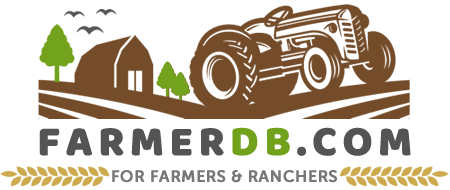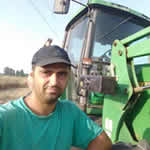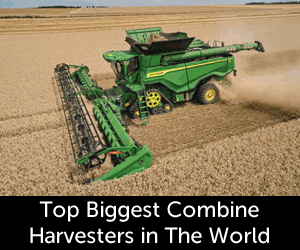The Black Baldy, also known as Black Whiteface, is a beef cattle crossbreed developed from a mix of Angus cows (Black Angus) and Hereford bulls.
The crossbreeding of these two breeds began as far back as the late 19th and early 20th centuries in the United States and other parts of the world.
Black Baldy cattle inherited a blend of both breeds’ desirable traits, and by the mid-20th century, these cattle became popular and a preferred choice for commercial beef production.
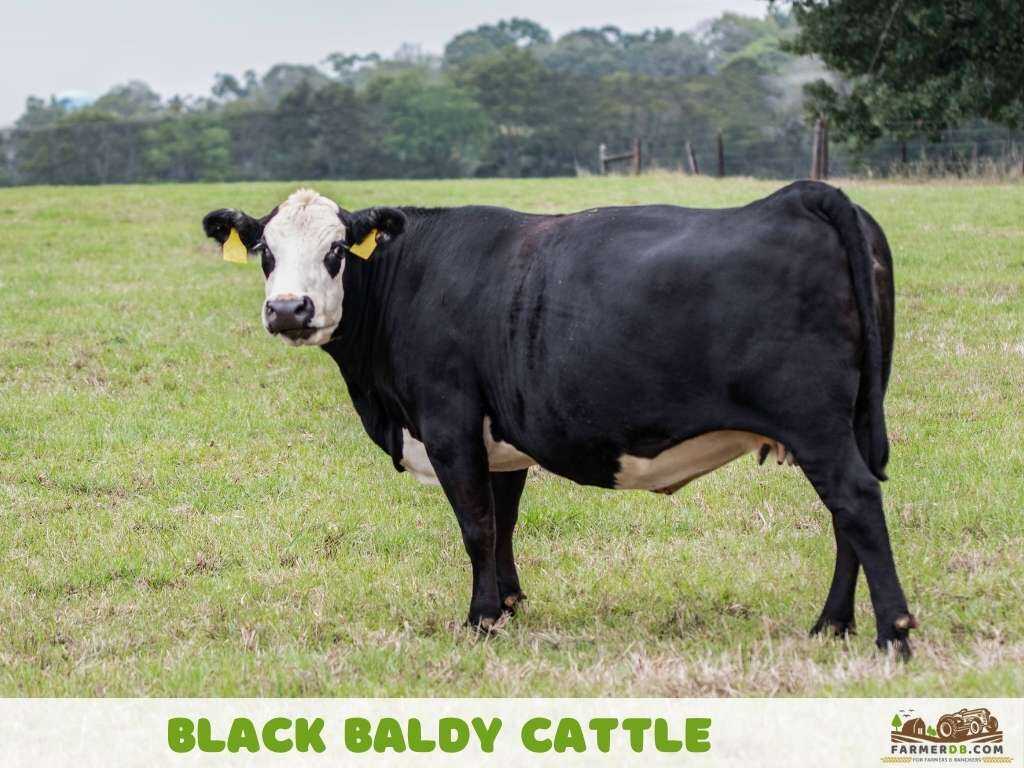
Today, they are found in North America, Australia, New Zealand, and South America and are often used in crossbreeding programs.
The Black Baldy is not recognized as a distinct breed. Because it is a hybrid, it does not have a formal breed registry like purebred cattle breeds do.
Contents
Characteristics
Color
The colors of this cattle breed are black and white.
While the colors themselves are nothing extraordinary, the distinctive pattern makes it easily recognizable.
The body is black, while the face is white.
The dominant black coat comes from Black Angus, while Hereford genetics contribute the white face.
In some individuals, white markings may also appear on the underside, legs, or tail tip.
Head, Eyes, Ears
The head reflects the lineage of its crossbreeding and is broad. The eyes are large, dark, and expressive, and their contrast with the white face makes them stand out. The ears, similar to those of Angus cattle, are medium-sized, rounded, and covered with short black hair.
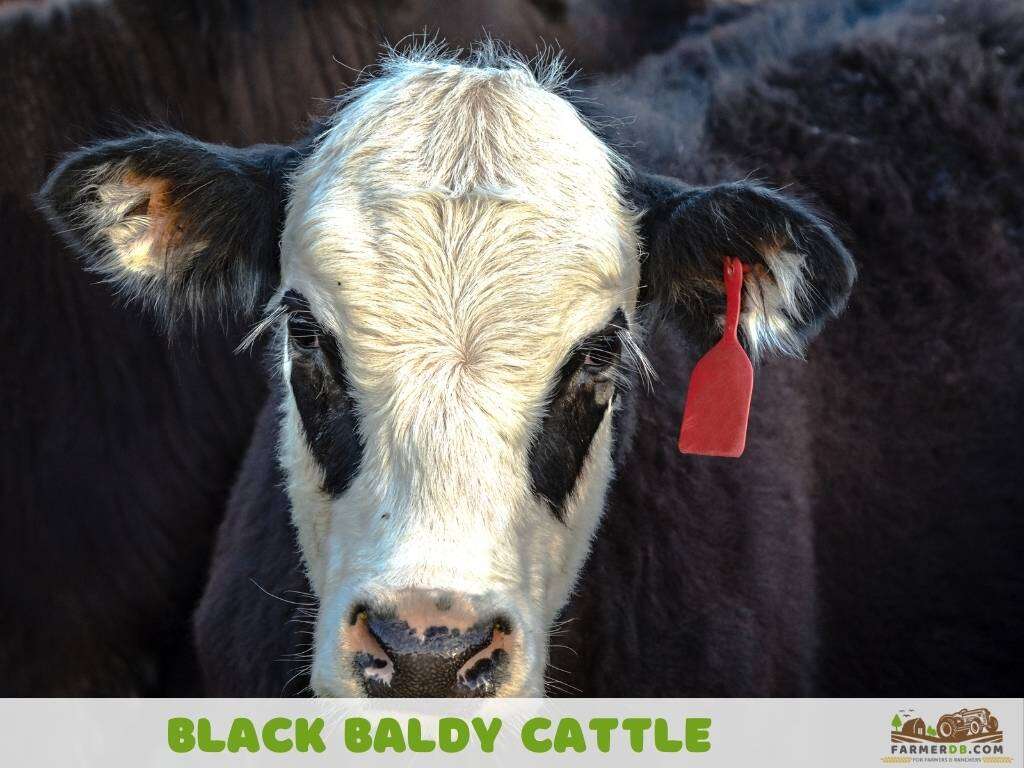
Horns
This breed is polled because Angus cattle are naturally polled and pass this trait to their offspring.
When selecting for breeding, it’s important to note that if a horned Hereford is used in the crossbreeding, some Black Baldies may inherit horns. In such cases, ranchers often dehorn them for easier handling.
Body
This breed’s body reflects its Angus and Hereford ancestry, being strong and well-muscled. The cattle have a broad chest, deep ribcage, and well-developed shoulders, back, and hindquarters.
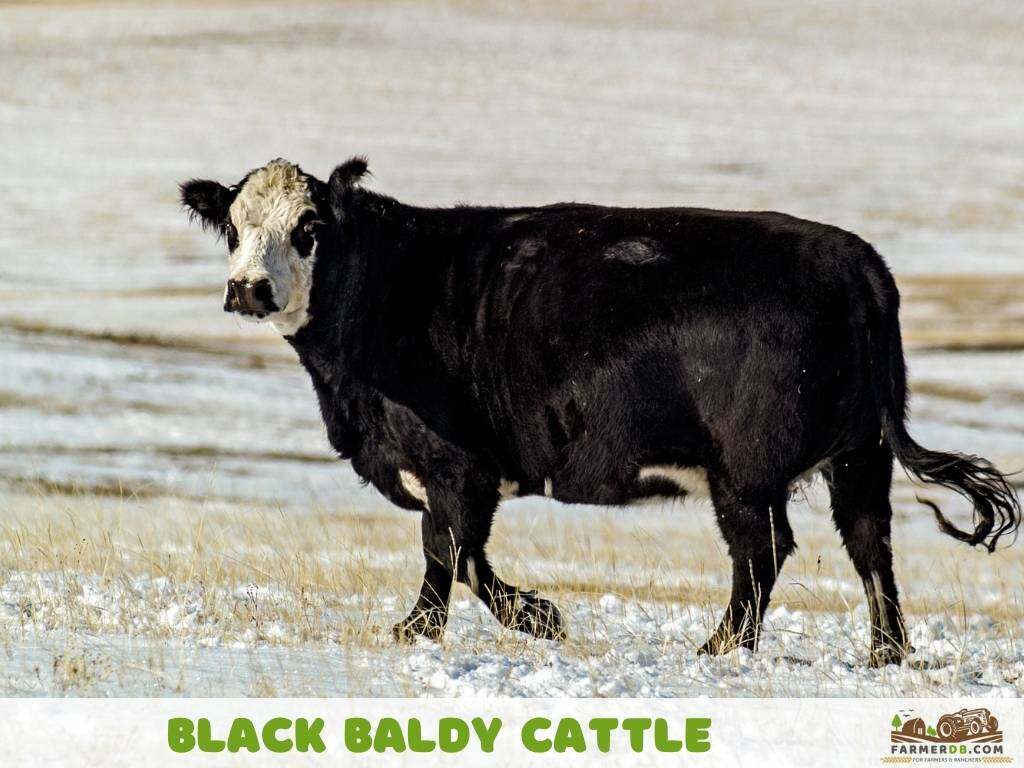
Legs
The legs have a solid bone structure with strong muscles. The hooves are durable and hardy, allowing the cattle to move efficiently across various terrains.
Size
These cattle are medium to large-sized.
Lifespan
They live for 10 to 15 years.
Compared to Hereford and Angus cattle, the lifespan of the Black Baldy is shorter.
Growth Rate
Weight and Grow Rate
These cattle grow quickly and efficiently.
Their growth rate is not extremely fast, but it can be described as balanced or moderate to fast.
Their weight at maturity is also substantial, with females reaching around 1,430 to 1,650 lbs (650 to 750 kg) and males ranging from 1,760 to 1,870 lbs (800 to 850 kg).
Slaughtered Time
If you raise it on grass, you can slaughter it around 24 to 30 months old. If you feed it grain, it will be ready at around 14 to 18 months.
Temperament
Black Baldies have a good temperament, which is no surprise since both Hereford and Angus are fairly calm and gentle breeds.
They are friendly, calm, and docile, making them easy to handle. They do not show signs of aggression and do not attempt to escape or jump fences.
They are herd-oriented cattle, preferring to stay with their herd, and may become stressed if isolated.
Their gentle nature makes them easy to work with and care for. As mothers, they are attentive and responsible, ensuring their calves are well cared for.
Meat
Thanks to their Angus and Hereford lineage, Black Baldy cattle produce beef that meets high market standards.
Their meat can be described as high-quality, tender, juicy, and flavorful. The key characteristic of its beef, marbling, comes from its Angus genetics. Marbling is what enhances the texture, juiciness, and overall quality.
Raising
Feeding
The nutrition of these cattle is not much different from that of other breeds.
Their main source of feed should be forage, as they do well on it and have good feed conversion efficiency. Pasture grasses like alfalfa, Bermuda, fescue, Timothy, and orchard grass are ideal for them. During colder seasons, you can supplement their diet with high-quality hay such as clover, alfalfa, mixed-grass hay, or silage.
They also grow and develop well on grain-based diets, which can give them an extra boost in weight gain. You can choose from corn, oats, barley, sorghum, or milo to add energy to their diet.
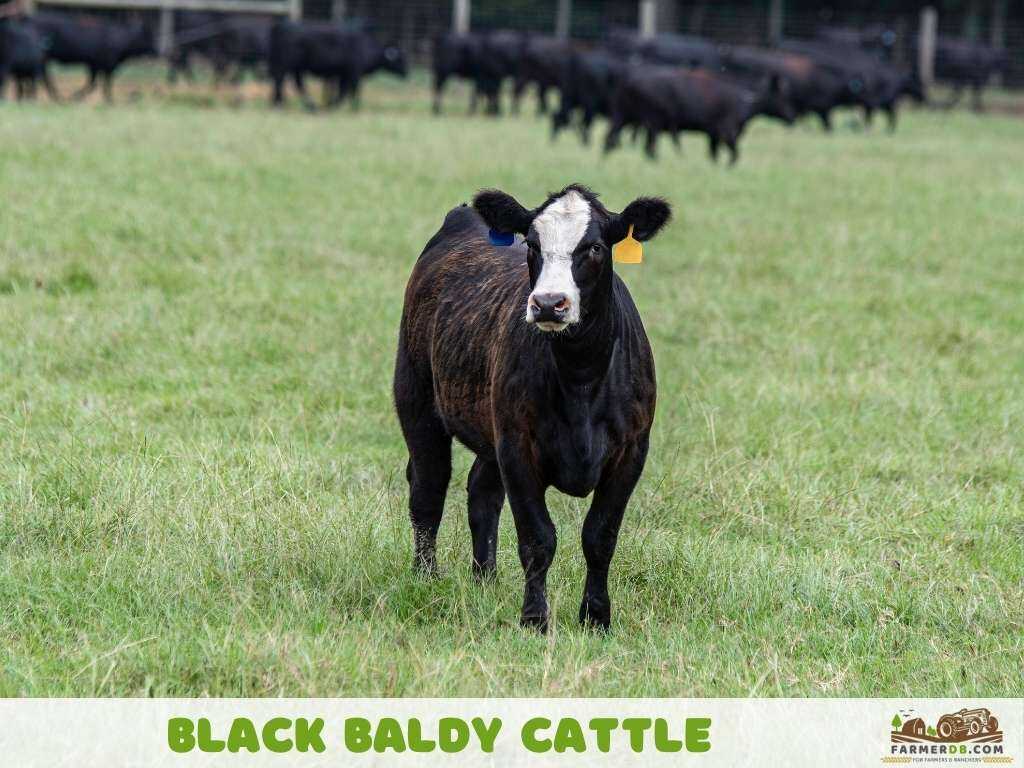
These cattle adjust well to different types of feed and do not have major dietary issues.
It’s important to ensure they have a good water source and to supplement their diet with minerals like calcium, salt, and mineral blocks, along with vitamins to support immunity and overall health.
Climate
The best climates for Black Baldy cattle are temperate and colder areas.
In cold climates, they have a thick coat from the Hereford side, which helps them handle winter weather. They still need shelter to stay dry and healthy and to get out of the wind, snow, and rain.
They are not the best choice for hot or dry climates because their black coat absorbs heat, which can cause heat stress.
Some farmers have said they managed to raise them in warmer areas, but they introduced them slowly to the higher temperatures. In these places, they need shade and plenty of water to stay comfortable.
Humid or tropical areas are not a good fit, as they can have more health and parasite problems in those conditions.
How many cattle per acre?
You need at least 2.5 to 4 acres per cow when the pasture has good, rich vegetation. If the pasture is poor in vegetation, you will need more than 4 acres per cow.
If you supplement their diet with additional feed, you can manage with fewer acres per cattle.
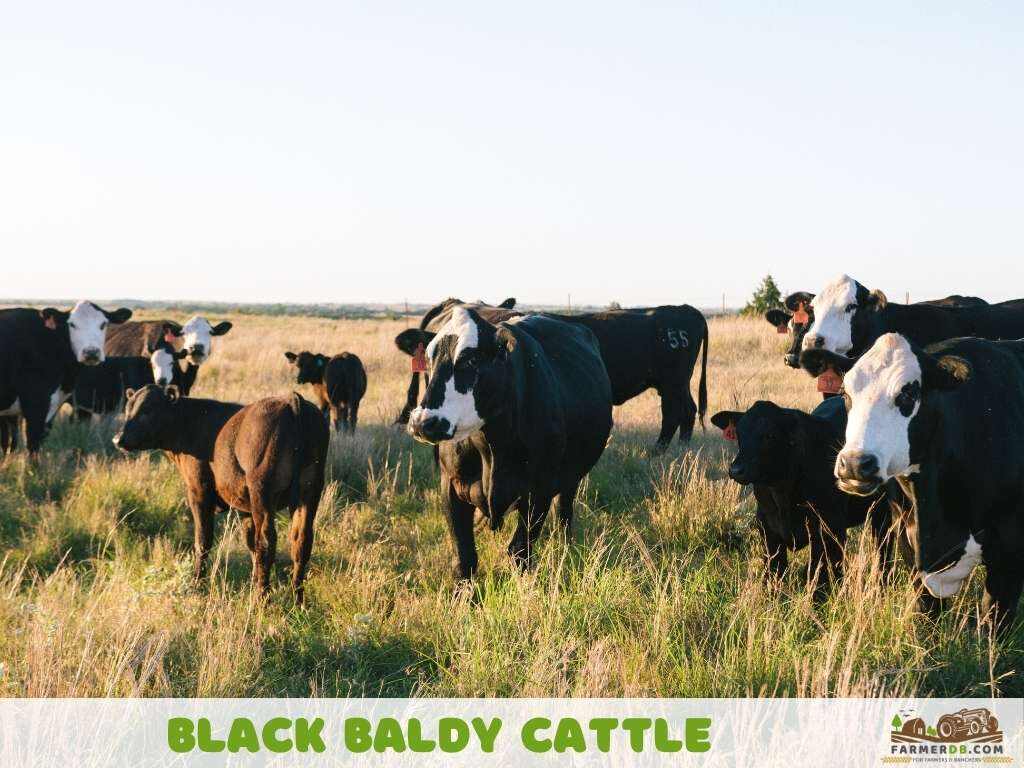
Terminal vs. Maternal
These cattle can be used for both terminal and maternal purposes.
Many ranchers choose them for commercial cow-calf operations because of their strong maternal traits, but they can also be bred for terminal sire programs and used for beef production.
It all depends on your goals, as this breed is versatile enough to perform well in both roles.
Health Issues
This breed is known for its better overall health compared to purebred cattle or unselectively bred mixed cattle.
Even with this hardiness, it is still cattle, and without proper care, common cattle health issues can arise.
Making a Black Baldy
The Black Baldy, created from Angus cow and Hereford bull, is the most common crossbreed combination when it comes to producing this hybrid.
But this isn’t the only way to create it.
You can also crossbreed a Hereford cow with an Angus bull, but this variation will produce smaller calves compared to the more common Angus cow and Hereford bull cross.
However, the reverse combination also has its advantages suc as:
- Reduced risk of cancer eye and fewer pinkeye issues
- Improved udder quality in black-coated cows (in most cases)
- High-quality cows
A Black Baldy can also be produced by crossbreeding other black-coated breeds with white-faced breeds. The appearance might be similar to an Angus × Hereford Black Baldy, but that doesn’t mean the other traits remain the same. Genetics, size, weight, and fertility can all vary depending on the breeds used.
Here are some other alternative crossbreeds that can be used to produce this cattle:
- Hereford x Black Simmental
- Hereford x Black Limousin
- Hereford x Brangus, here you can use Black, white face Brangus x Hereford or Black, white face Brangus and Black Hereford
- Angus x Black Simmental
- Angus x Charolais (white-faced variety)
| Cross | Appearance | Heat Resistance | Meat Quality | Growth & Feed Efficiency |
|---|---|---|---|---|
| Hereford × Black Simmental | Black body, white face | Moderate | High (lean, well-marbled) | High |
| Hereford × Black Limousin | Black body, white face | Moderate | Moderate to High (lean, good yield) | High |
| Hereford × Brangus (BWF Brangus × Hereford) | Black body, white face, possible Brahman traits | High | Moderate | High |
| Hereford × Brangus (BWF Brangus × Black Hereford) | Black body, white face, polled | High | Moderate to High | High |
| Angus × Black Simmental | Black body, white face | Moderate | High (good marbling and size) | High |
| Angus × Charolais (White-faced variety) | Black or dark red body, some white markings | Moderate | Moderate to High (lean, large frame) | High |
If you already have a Black Baldy, you can use it in crossbreeding to produce other cattle. Some combinations you can use include:
- Charolais bulls × Black Baldy cows
- Black Baldy heifers × Hereford bulls
Why These Cattle Are Trending in the Cattle World
Even though they are not a recognized breed, these cattle are highly popular in the beef industry, and more and more farmers looking for cost-effective, low-maintenance cattle are choosing to raise them.
And they’re not just a passing trend, as they are becoming a long-term, preferred crossbreed for commercial cattle operations.
This growing popularity comes from their efficiency, adaptability, and profitability in both maternal and terminal crossbreeding systems.

Farmers and producers are aiming to have as many Black Baldy females as possible in their herds because of their high fertility, longevity, and strong maternal instincts. Their feed efficiency also makes them a top choice, as they require less maintenance compared to many purebred cattle.
Another advantage is their black coat gene, which increases their chances of qualifying for Certified Angus Beef (CAB) programs, making them highly marketable in the beef industry.
Advantages
- Hybrid vigor (heterosis)
- Great maternal traits
- Feed efficiency
- Lower maintenance
- Docile temperament
- Good growth rates
- Better udder quality
- Reduced health issues
- Adaptability
- High-quality meat
Disadvantages
- Not recognized as a breed
- Inconsistent appearance: While most Black Baldies have a black body and white face, genetics may lead to variations in coat color and markings.
- Potential for horned offspring: If a horned Hereford is used, some Black Baldies may inherit horns, requiring dehorning.
- Variable Carcass Traits. Depending on the genetic influence, some Black Baldies may not marble as well as straight Angus.
Do you have any experience with the topic discussed here?
Would you like to improve the information shared and contribute your practical knowledge on the subject?
Your real-world experience as a farmer or rancher could greatly benefit other members, and the community would deeply appreciate your contribution.
